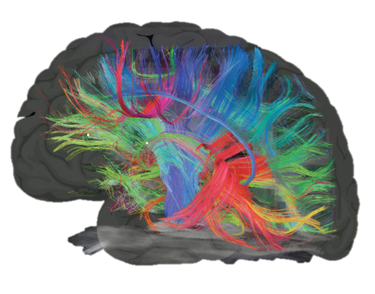Brain Imaging in Children with Autism
While significant advances have been made in identifying brain functional and structural difference between individuals with autism spectrum disorders (ASD) and typically developing (TD) individuals, little is known regarding differences in large-scale brain network interactions that underlie the social and communicative deficits and atypical behaviors in ASD. Our research aims to examine the structural and functional connectivity patterns of brain areas that participate in neural networks for social cognition, imitation, language, and other functions in children and adolescents with ASD. We theorize that abnormalities in connections within and between these neural networks can disrupt normative cognitive development in ASD.
We use a multimodal approach to this research, utilizing two complementary neuroimaging techniques (functional connectivity MRI and diffusion weighted MRI) to assess both functional and structural connectivity in children and adolescents ages 7-18 years.
Establishing links between cognitive-behavioral impairment, local cortical compromise, functional connectivity, and anatomical connectivity promises to unite several currently separate lines of neurodevelopmental research in autism that may be the foundation for therapeutic advances. Research also provides an approach to characterizing neurofunctionally defined endophenotypes of autism, in support of identifying subtypes of genetic risk within the population.


